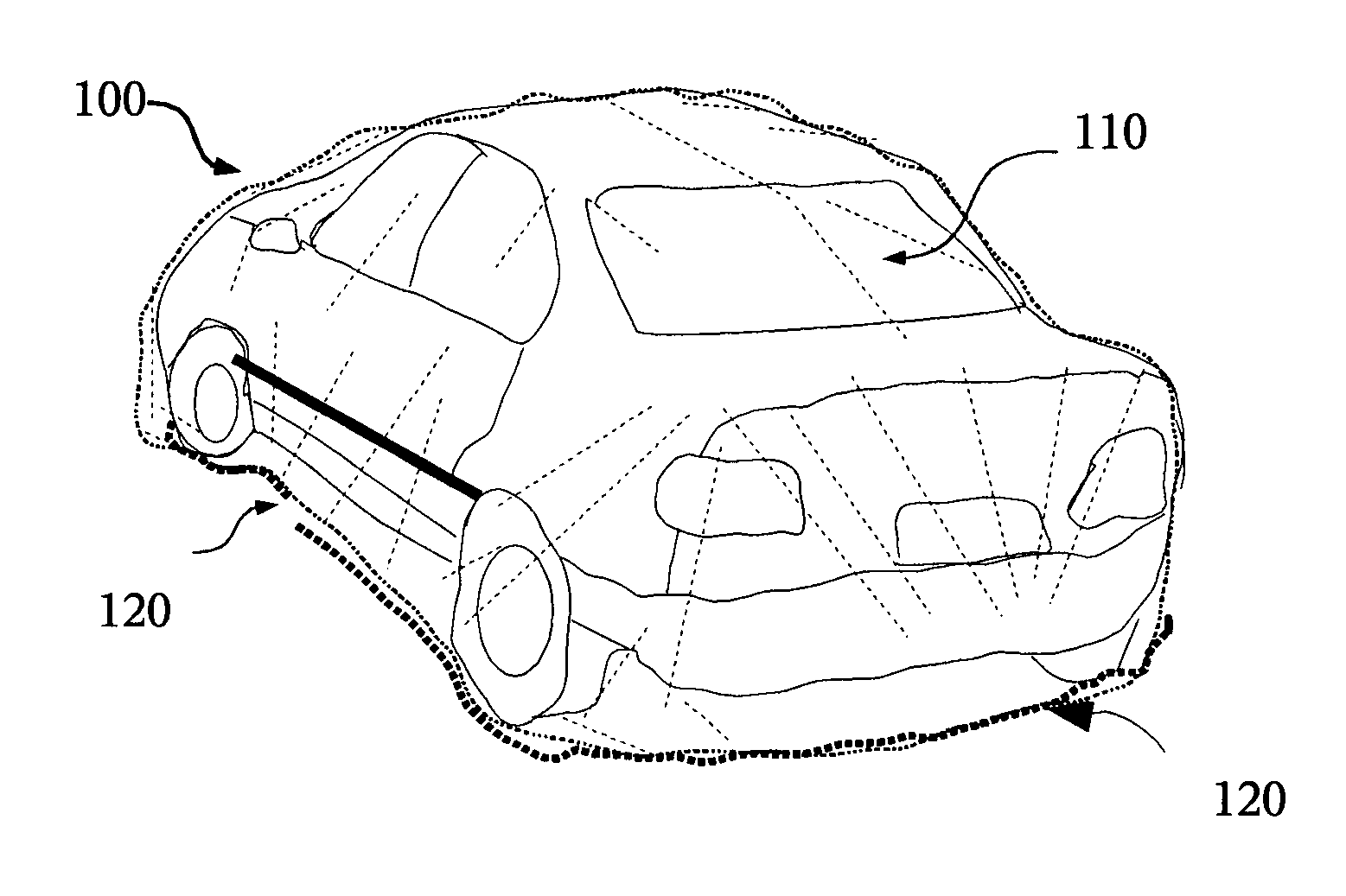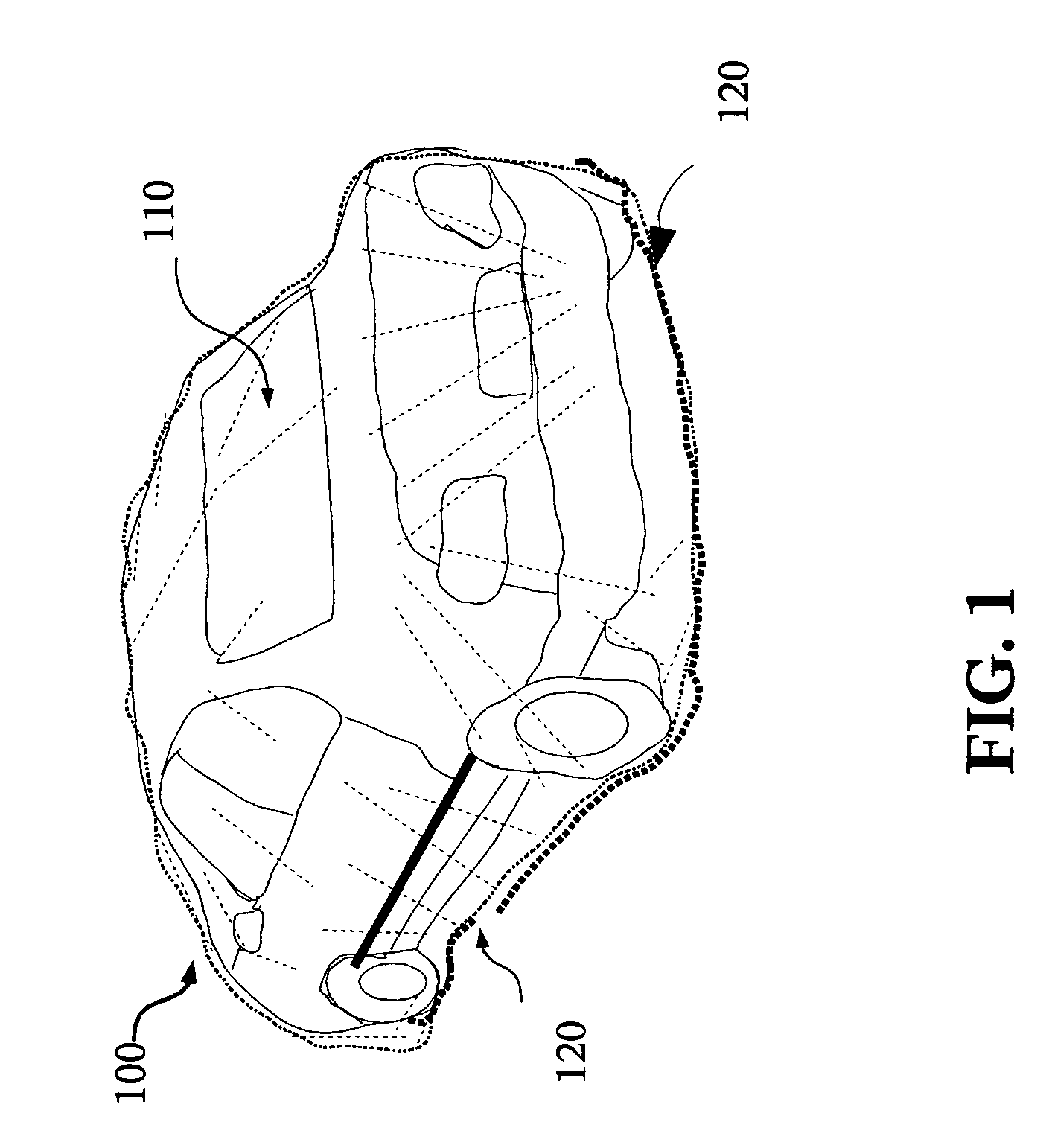Protective vehicle cover
a protective cover and vehicle technology, applied in the direction of vehicle components, superstructure subunits, roofs, etc., can solve the problems of difficult removal difficult to install without damaging the finish, and difficulty in removing dry aerosol particles with respect to the finish of the vehicle, so as to minimize the number of discrete sizes, avoid damage, and be easy to install
- Summary
- Abstract
- Description
- Claims
- Application Information
AI Technical Summary
Benefits of technology
Problems solved by technology
Method used
Image
Examples
Embodiment Construction
[0030] In accordance with the present invention, FIG. 1 shows this inventive protective cover 100 installed on a motor vehicle 110. The cover is installed by an individual by starting at a first end of the vehicle by stretching the elastic band to enlarge the opening, then uniformly working the opening to the opposite end of the vehicle before placing the elastic band around the lower portions of the tires, thus bringing portions of the protective cover around the underside of the vehicle. Frequently, the most antenna structures can be left in place. Thus protective vehicle cover 100 is preferably fabricated from a single discrete sheet, as the outer dimension and elastic band properties provide a cover that substantially surrounds the entire vehicle. When installed the opening at elastic band 120 is at the ground level where the sheet closes around a perimeter region preferably having outer dimensions corresponding substantially to point of contact of the outside edge of each of th...
PUM
 Login to View More
Login to View More Abstract
Description
Claims
Application Information
 Login to View More
Login to View More - R&D
- Intellectual Property
- Life Sciences
- Materials
- Tech Scout
- Unparalleled Data Quality
- Higher Quality Content
- 60% Fewer Hallucinations
Browse by: Latest US Patents, China's latest patents, Technical Efficacy Thesaurus, Application Domain, Technology Topic, Popular Technical Reports.
© 2025 PatSnap. All rights reserved.Legal|Privacy policy|Modern Slavery Act Transparency Statement|Sitemap|About US| Contact US: help@patsnap.com



